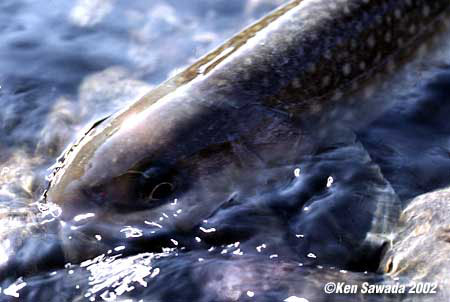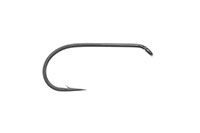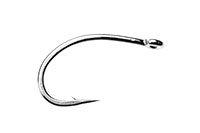
Cherry Salmon • The First Stage --Vol.34--

A large pool spreads at the junction of the Takahara River and the Sugoroku valley. A lot of big fish live there.
Rules on Leisure Fishing
In May 1981 I was traveling Hokuriku district in Japan with my fishing companion. 10 years had passed since I caught my first Steelhead. On that day I started from Hida Takayama, moved down along the Takahara River and enjoyed fishing at the evening rise at the junction of the Sugoroku valley and farther downstream in the head of the pool of the Asaida dam. A large pool at the junction of the Sugoroku valley is still a good fishing point today and you have a chance of finding big fish under good conditions. I fished the fast current of the head of the large pool with size 12 Spent Badger and caught a beautiful yamame trout. Then I headed just downstream for the Asaida dam.
Rich water in early summer made yamame trout shining silvery.

The head of the pool of the Asaida dam. In the evening rises started along the channel.
Evening in Asaida
The main stream of the Takahara River jointed with the Sugoroku valley, became nearly twice as wide as before, formed a beautiful rapid current and flowed into the Asaida dam. When the sun half set behind the mountain I arrived at the head of the pool. I got off the car and stared at the water carefully. There were some little ripples near the bank. Evening rises seemed to start. I stood beside the point where the river flowed into and looked at the smooth surface spreading from the border of the stream. There were a group of rises 20m away from the bank. I wanted to cast the fly but waited for a while. It was still too light. I thought I should watch rises carefully.Only 10 minutes later the group of rises came much nearer to the bank. The most of rises were made 10m away from the bank. Some were so near that I could have hit them with the rod tip. I cast the fly quietly off the centre of rises. It was the same way as I fished around boiling minnows in the sea. Putting the fly not too close to the centre of shoal gives me more chances.
My first catch was a char. It had big white spots and was fat like a sea-going char. Its pull was so strong that I had expected it to be bigger. Then I caught only yamame trout. As I had to run around into every direction after hooking those yamame trout, I had expected them to be as big as 40cm. But they were a bit more than 30cm.

Most of char have big white spots like sea-going char.
Half an hour later rises suddenly stopped. I wanted to use the wet fly immediately but gave up fishing because we had to go back to Kanazawa on that night. In spite of short time fishing I caught some yamame trout and a char with dry flies of size 12 Spent Badger and size 14 Mosquito and those fish were all trophy-sized ones. Those yamame trout were much fatter than ordinary river fish and their shape was like a little bonito.
The Asaida dam is shallow and has a commanding view, where fish grow large very easily. Here yamame trout as well as char were so big in the end of May. How big they would grow up in a larger lake! I remembered some landlocked cherry salmon I had caught in a lake in Urabandai were over 50cm. If they grew up in the sea, instead of a lake, how big they would be. Thinking in this way and that, I headed straight for Kanazawa.

A yamame trout grew up to be bullet-shaped, like a bonito or a tuna. If it grew up a little bigger it could be changed into a cherry salmon.
The Kuzuryu River
On the next day I saw the Kuzuryu River.The river flowed rich, filled with turquoise water including snow melting water. Cherry salmon come upstream here. Now they might stay in the pool in front of me. I wanted to catch a cherry salmon by all means that is one of the biggest fish in the main island in Japan. I had already caught another big fish, brown trout, in Lake Motosu. Although the river of cherry salmon flowed in front of me I was not allowed to fish here. Terribly disappointed, I looked down the barrier of Naruka, Some poachers tried to catch cherry salmon! There was no better evidence that cherry salmon stayed here. That idea made me more frustrated. Is there any way to fish here?
Since then I had never missed a chance of asking various anglers and members of commercial fishermen?fs cooperatives, but no one answered me properly.

The Kuzuryu River in May 1986. The scenery was seen from so called Hatayaura to the barrier of Naruka upstream.
5 years passed. One day in January 1986, I was reading the newest rules on leisure fishing, feeling bitter as usual but then noticed a surprising fact. There was almost no rule about Sea-going trout. Why? From when did it happen? Did they omit that rule to save trouble? Questions came to me one after another. I could not rest or sleep. On the next day I phoned some local governments concerned and got surprising answers. Fishing rules were set up as local regulations and I made sure that in some prefectures there was no regulation about Sea-going trout. Some prefecture officials advised me to ask the commercial fishermen?fs cooperative and some were indifferent. Fukui prefecture I was most concerned with had no regulation.
Furthermore, I asked a person who changed his job from the Fisheries Agency to the Society for the Promotion of Fishing just in case. Then I got an astonishing answer.
"There was no rule to prohibit you from fishing or fishing cherry salmon. You can fish if you want. But it is none of our business if you are hit by some commercial fishermen."
I could not believe my ears. Those words really came from an ex- civil servant who was working for promotion of fishing. Anyway, I knew the law permitted me to fish cherry salmon. I will find a way! I phoned the fishermen?fs cooperative of the Kuzuryu River to make sure that I would be permitted to fish cherry salmon. Hearing their answer "Yes", I jumped with joy and prepared for fishing. I can aim at cherry salmon in the Kuzuryu River from now. I felt excited. A new year started with good news, indeed!

In early June 1974, I was fishing yamame trout in Hokkaido. I caught some cherry salmon without expectation.
Unknown Fishing
What should I do to fish cherry salmon? I had caught a lot of landlocked cherry salmon in lakes that were brought up in the fresh water. It is well known that those cherry salmon bite the lure and the fly. But I had never heard that cherry salmon that came upstream from the sea were caught with the fly, apart from the lure. It was quite natural because no fly fisherman tried. The problems were to know where they stay and how to put the fly at that point. Needless to say, what fly was effective was of great concern, too.I remembered I had visited Hokkaido to fish yamame trout, char, sea-going char and rainbow trout in mountain streams in every June from 1974 to 1976. During my fishing I also caught some cherry salmon. To be exact, they came to my hook while I aimed at yamame trout. They mainly bit the streamer or the wet fly but sometimes jumped at the dry fly. But all of them were caught in ordinary mountain streams where weight 5 line was suitable although they were near the sea. Those streams were no match of the Kuzuryu River swollen by a huge amount of snow melting water as far as I could see. My experience in mountain streams was not helpful to fish cherry salmon in the Kuzuryu River. I thought I should not depend on my old experience.
-- To be continued --
- NET SHOP INFORMATION

SL6 Black Spey Hooks

DU3 Limerick Spinner Hooks

SL4 Single Bartleet Hooks

XD1 Tube Fly Double Hooks

DD2 Flat Perfect Hooks

DD1 Black Terrestrial Hooks

TD4 Old Limerick Wet Hooks

DU1 Silver May Hooks

MU1 Flat Midge Hooks

LD3 Long Limerick Hooks

TD2 Summer Sproat Hooks

XS1 Tube Single Silver Hooks

TD6 Siver Sedge Hooks

SL5 Black Spey Hooks

DU3 Limerick Spinner Hooks
- TROPHY CLUB
- FLY SHOW
- EXHIBITION
- MASTERS`
- FLY DRESSING CONTEST Archives
- TRAVELLER Archives
- TACKLE IMPRESSIONS Archives
- ANGLERS` PHOTO GALLERY Archives
- ----------------------------------------------
- トロフィークラブ
- フライショー
- エキシビション
- マスターズ
- フライドレッシング・コンテスト・アーカイヴ
- トラヴェラー・アーカイヴ
- タックル・インプレッション・アーカイヴ
- アングラーズ・フォトギャラリー・アーカイヴ
株式会社サワダ 185-0021 東京都国分寺市南町3-13-4
SAWADA'S INC. 3-13-4 Minamicho, Kokubunji, Tokyo 185-0021, Japan
写真・ドキュメントの無断転載を禁じます。
All the images and documents found on this site are owned by Ken Sawada and may not be used without permission.
But, link to this site is FREE.
Copyright © 2000 - 2024 SAWADA'S INC.. All rights reserved.
SAWADA'S INC. 3-13-4 Minamicho, Kokubunji, Tokyo 185-0021, Japan
写真・ドキュメントの無断転載を禁じます。
All the images and documents found on this site are owned by Ken Sawada and may not be used without permission.
But, link to this site is FREE.
Copyright © 2000 - 2024 SAWADA'S INC.. All rights reserved.
